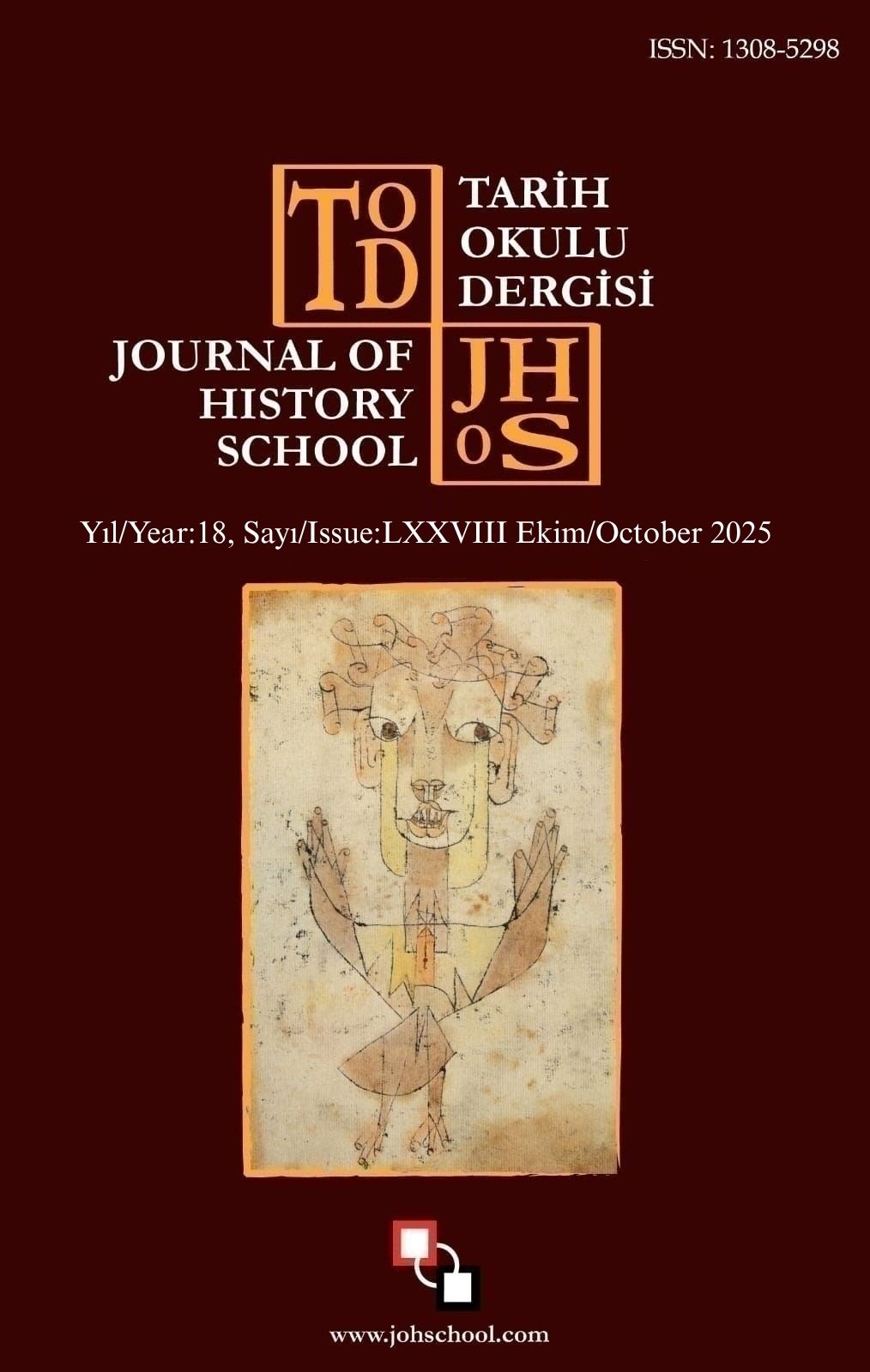Author :
Abstract
2125 envanter numarasıyla müze defterine kaydedilen kadın portresi, 1965 yılında zoralımla Burdur Arkeoloji Müzesi’ne getirilmiştir. İlk kez bu çalışmayla bilim dünyasına sunulan kadın portresi, iri tanecikli beyaz mermerden yontulmuştur. Kadın portresinde gözlemlenen alın merkezinden her iki yana ayrılan ve yanlara doğru taranan iri dalgalı saç bukleleriyle şekillendirilen saç modası, Antoninler Hanedanlığı Dönemi’nin kadın hanedan mensuplarıyla benzerdir. Bu benzerliğin yanı sıra kadın başındaki fizyonomik özelliklerin idealize (güzelleştirilerek) edilerek aktarılmasıyla birlikte matkap kullanımının da yalnızca göz plastiğindeki işçilikle sınırlı olması, değerlendirilen kadın başının hanedanlık içinde daha spesifik bir döneme tarihlendirilmesini mümkün kılmıştır. Bahsedilen üslupsal özellikler eserin, Erken Antoninler Hanedanlığı Dönemi’nde (Antoninus Pius) imparatorun eşi Yaşlı Faustina’dan esinlenerek yontulduğu ortaya koymuştur. Müze defterine eserin buluntu yeri olarak da Burdur’un Bucak ilçesi yazılmıştır. Bu durumda kadın başının, pek çok üstün kalite ve işçilikteki heykeltıraşlık eserinin ele geçtiği Bucak sınırları içinde yer alan Kremna Antik Kenti teritoryumundan ele geçmiş olabileceği ihtimalini güçlendirmiştir. Son olarak çalışmada, mermer kalitesi ve işçilik becerisiyle özel kadın portesinin Kremna’da Dokimeion kökenli ustaların üretimi olabileceği varsayımı üzerine durulmuştur.
Keywords
Abstract
The woman portrait, recorded in the museum register with inventory number 2125, was forcibly brought to Burdur Archaeology Museum in 1965. Presented to the scientific world for the first time through this study, the woman portrait was sculpted from coarse-grained white marble. The hair style observed in the woman portrait, with large wavy tresses parted from the center of the forehead and combed sideways, is similar to that of woman dynasty members during the Antonine Dynasty. In addition to this similarity, the fact that the physiognomical features of the woman’s head were idealized (beautified) and the use of the drill was limited only to the workmanship in the eye plastic made it possible to date the evaluated woman’s head to a more specific period within the dynasty. These stylistic features suggest that the work was sculpted during the Early Antonine Dynasty (Antoninus Pius), inspired by the emperor’s wife, Faustina the Elder. The museum register also lists Bucak district of Burdur as the artifact’s findspot. This strengthens the possibility that the woman head was recovered from the territory of Kremna ancient city, located within the boundaries of Bucak, where numerous sculptural works of exceptional quality and craftsmanship have been unearthed. Finally, the study explores the hypothesis that this distinctive woman portrait, with its marble quality and skilled craftsmanship, may have been produced by masters of Dokimeion origin in Kremna.





